Versuchen GOLD - Frei
Jam Or Fruit Spread?
Eat Well
|Issue #18 2018
Is it a jam, a jelly or a fruit spread? There’s a lot to more to sugar-free jams than meets the eye, so we spoke to two very diff erent producers to discover what really goes into an artisanal jar of spreadable fruit.

There aren’t too many places to hide when you’re making a sugar-free jam or fruit spread so it’s imperative that the fruits used be at their prime and of the highest quality. Before we can even get into the making of fruity spreads to put on your toast that don’t have cane sugar added, we need to be clear about our terms.
CAN “JAM” BE SUGAR FREE?
First up, let’s clarify what constitutes a jam or a fruit spread. Australian regulations tell us that for a conserved fruit product to be classified and sold as jam it must contain cane sugar. So any preserved fruit product that doesn’t contain cane sugar must be labelled and sold as a fruit spread in Australia.
CEO of St Dalfour Australia, Sheldon Ross, believes this is actually very confusing for consumers. “We have lots of customers write to us saying, ‘We love your jam,’ because the phrase ‘fruit spread’ is not exactly in our vocabulary,” Ross tells us.
“I think it’s a beautiful perspective to use the words fruit spread,” he adds. “When we use those words we are actually talking about fruit. When we use the word
This is where it pays to seek out a natural artisanal fruit spread or conserve. You’ll find artisanal preserves contain 100 per cent fruit, or very close to 100 per cent fruit.
Nina Corrone, owner of Australian Strawberry Fields in Victoria and producer of Nina’s Homemade Preserves, wholeheartedly agrees with this thought. When her husband was diagnosed with diabetes a few years ago, she made it her mission to create a jam that didn’t contain cane sugar and, after trying many options on the market, found the answer in organic stevia.
“I wanted a natural sweetener, nothing artificial, and one drop of stevia sweetens a whole jar,” Corrone says.
Diese Geschichte stammt aus der Issue #18 2018-Ausgabe von Eat Well.
Abonnieren Sie Magzter GOLD, um auf Tausende kuratierter Premium-Geschichten und über 9.000 Zeitschriften und Zeitungen zuzugreifen.
Sie sind bereits Abonnent? Anmelden
WEITERE GESCHICHTEN VON Eat Well
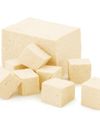
Eat Well
ARE YOU TO FU enough?
Love it or hate it, everyone has an opinion about tofu. Tofu is a very popular plant-based protein for vegans and vegetarians, but now this humble bean curd is starting to shine for meat lovers too as an alternative source of protein.
4 mins
Issue #47
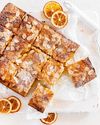
Eat Well
Sweet TRAYBAKES
Whether you want to feed a group of people or make a batch of treats for the week, traybaking is a no-fuss way to cook up something sweet and easy that will please everyone. Your family and friends will love you when you offer them some of our: cinnamon scrolls; fruity chocolate; espresso brownies; lemon & coconut slice; or ginger cake with brown butter frosting.
10 mins
Issue #47
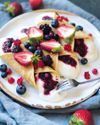
Eat Well
ROLL UP
When you roll food, whether in Lebanese bread, a thin pancake or whatever you choose, you can create a parcel of nutrition that is perfectly suited to your own tastes and needs. Here are some roll-up recipes that will suit every occasion including: mango, snow pea, & sprout rice paper rolls; oat crepes with coconut yoghurt & mixed berries; or beef meatball & tzatziki flatbreads.
7 mins
Issue #47
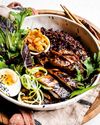
Eat Well
RICE BOWL Lunches
If you are working from home, or even enjoying your weekend, and lunchtime rolls around but you have no plans for lunch, then a rice bowl is an ideal saviour.
10 mins
Issue #47

Eat Well
PLANT-BASED PIES
Pies are a piece of gastronomic brilliance: a filling with a case and lid you can eat is food genius. The first pies date back to Egyptian times and there is a recipe for chicken pie that was carved into stone more than 4000 years ago. For millennia, however, the pie casing was mostly used to cook the filling, but for around 500 years or more we have been eating the pie crust too.
16 mins
Issue #47

Eat Well
20 FOOD CRAVING HACKS
Decipher the deeper causes of your cravings and discover tricks to curtail them.
5 mins
Issue #47
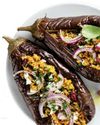
Eat Well
Eggplant (Solanum melongena L)
Eggplant is a wonderful option for vegans and vegetarians, extremely nutritious and highly versatile in the kitchen.
3 mins
Issue #47
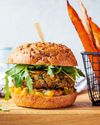
Eat Well
5 PANTRY SAVIOURS
Whether you're cooking a simple breakfast or something more exotic, here are five pantry food staples you should have on hand to cook plenty of delicious meals in the comfort of your own home.
4 mins
Issue #46
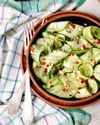
Eat Well
Cucumber (Cucumis sativus)
Cucumbers are delicious fresh but they also offer plenty more options in the kitchen.
3 mins
Issue #46

Eat Well
Our Chefs
Meet the chefs who bring this issue's recipes to you: Lisa Guy, Georgia Harding, Lee Holmes, Sammy Jones, Raquel Neofit, Naomi Sherman and Ames Starr.
6 mins
Issue #46
Translate
Change font size
